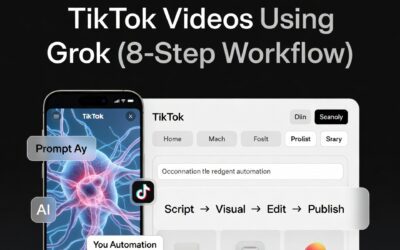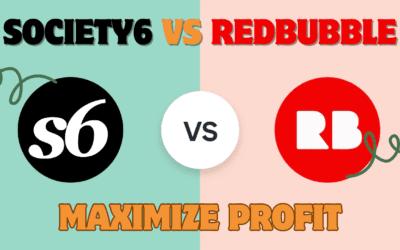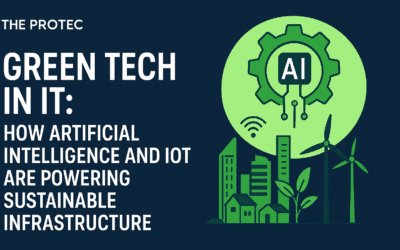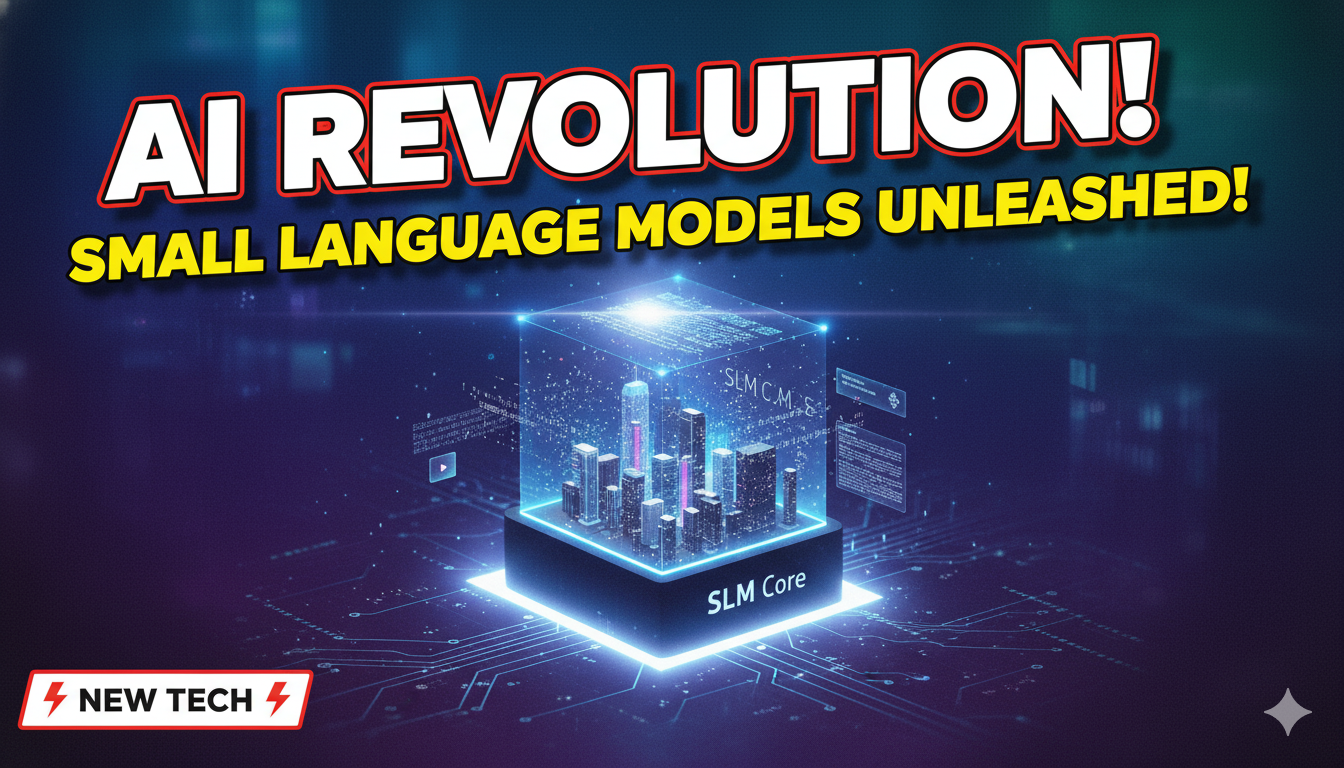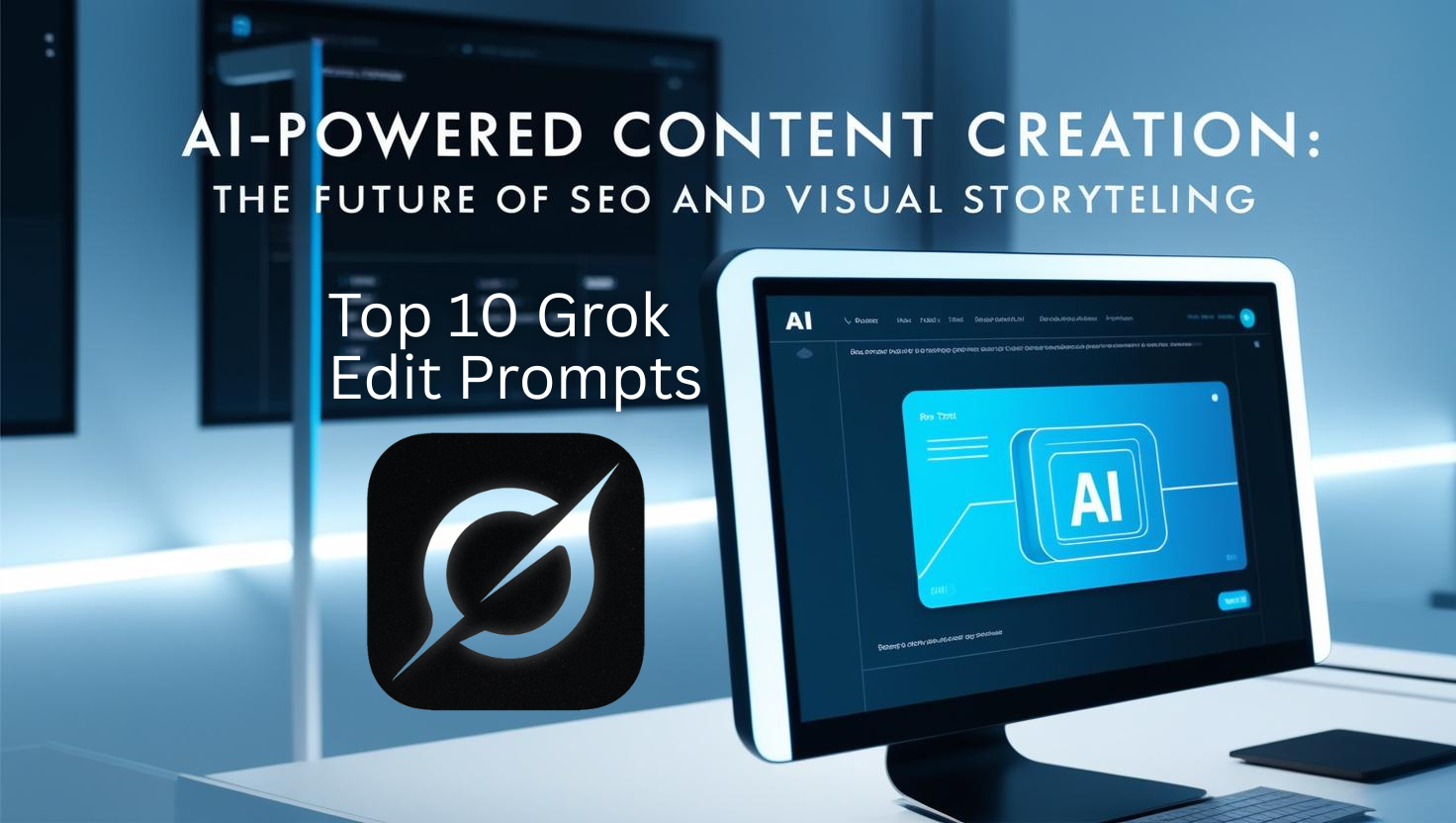In the world of artificial intelligence, a quiet revolution is underway, shifting the focus from sheer size to targeted efficiency. Small Language Models (SLMs) are emerging as powerful alternatives to their larger counterparts, offering a compelling blend of performance, privacy, and practicality. The global SLM market, valued at $0.93 billion in 2025, is projected to explode to $5.45 billion by 2032, growing at a stellar CAGR of 28.7%. This article explores why smaller, faster, and cheaper AI is not just an alternative but is poised to become the future for a wide range of business applications.
Introduction
Small Language Models (SLMs) are compact AI models designed for efficiency, typically featuring fewer than 20 billion parameters. Unlike massive models that demand cloud computing, SLMs are engineered to run on devices like smartphones and IoT sensors, directly addressing critical issues of latency, data security, and energy consumption. This strategic shift is transforming industries from healthcare to finance by enabling real-time decision-making and strict data governance.
This post will delve into the forces driving the adoption of SLMs, from the rise of edge computing to the demand for cost-effective, domain-specific AI. We will examine real-world case studies from industry leaders and provide a clear, actionable framework to help you determine when and how to integrate these powerful models into your own technology stack. For engineers, product managers, and business leaders, understanding this transition is key to building the next generation of intelligent, efficient, and responsible applications.
What Are Small Language Models (SLMs)? Defining the New AI Paradigm
While the AI spotlight has long been on giants like GPT-4, a more nuanced category of models is gaining traction. Small Language Models (SLMs) are compact AI models, typically with parameters ranging from a few million to under 20 billion, optimized for efficiency and specific tasks rather than general knowledge.
The key differentiator lies in their design philosophy. SLMs achieve their efficiency through advanced techniques that compress larger models without a significant loss in capability. Key methods include:
- Pruning: Removing redundant or less crucial parameters from a neural network.
- Quantization: Converting high-precision model data (e.g., 32-bit) into lower precision (e.g., 8-bit), reducing size and speeding up inference.
- Knowledge Distillation: Transferring knowledge from a large, pre-trained “teacher” model into a smaller, “student” model.
This streamlined architecture allows SLMs to operate effectively on resource-constrained environments like smartphones, embedded systems, and edge devices, often without a continuous cloud connection.
Why Now? The Market Forces Fueling the SLM Boom
The rapid ascent of Small Language Models (SLMs) is not accidental. It is driven by concrete technological and economic shifts that make their value proposition more relevant than ever.
- The Insatiable Demand for Edge Computing: Companies are increasingly deploying AI on smartphones, IoT sensors, drones, and embedded systems rather than relying solely on the cloud. This strategy directly tackles the critical challenges of latency, data security, and energy consumption. In sectors like healthcare, finance, and autonomous vehicles, edge-based SLMs are prized for enabling real-time decisions and robust data management.
- The Drive for Cost-Effective and Sustainable AI: Training and operating massive LLMs requires immense computational resources, leading to high costs and a significant carbon footprint. SLMs, with their lower computational demands, offer a more sustainable and economically viable path to AI adoption, especially for startups and enterprises mindful of their IT budgets and environmental impact.
- The Critical Need for Data Privacy and Control: With stringent global data protection regulations (like GDPR and HIPAA), businesses are wary of sending sensitive information to third-party cloud APIs. SLMs can be deployed on-premises or locally on devices, ensuring that proprietary or personal data never leaves the organizational boundary. This “privacy-by-design” approach is a major advantage in regulated industries.
- The Quest for Domain-Specific Expertise: While LLMs are jacks-of-all-trades, they can be masters of none. There is a growing opportunity for versatile, domain-specific models. SLMs can be finely tuned on specialized datasets—such as medical journals, legal contracts, or financial reports—to achieve a high level of accuracy and relevance that general-purpose models often lack.
SLMs in Action: Three Concrete Examples
The theoretical benefits of SLMs are best understood through their practical, real-world applications. Here are three concrete examples from leading tech companies.
1. Microsoft’s Phi-3: Power and Performance in a Compact Package
Microsoft’s Phi-3 family exemplifies the potential of SLMs. The Phi-3-mini model, with 3.8 billion parameters, was trained on 3.3 trillion tokens of high-quality data. Despite its small size, its performance is comparable to much larger models like Mixtral 8x7B and GPT-3.5, achieving a score of 69% on the MMLU benchmark for language understanding. This demonstrates that with carefully curated training data, SLMs can deliver robust performance for tasks like content creation and code assistance, making them ideal for integration into applications via cloud APIs or on-device deployment.
2. IBM’s Granite: An Enterprise-Grade SLM for Specialized Tasks
IBM’s approach with its Granite model series is focused on the enterprise. The Granite 3.0 collection includes models with 2 and 8 billion parameters, specifically designed for low latency and high inference performance in business contexts. These open-source models excel not only in general language tasks but also in specialized enterprise domains like cybersecurity and retrieval-augmented generation (RAG). IBM’s offering highlights the trend of SLMs being fine-tuned for high-value, specific business functions where accuracy, speed, and data sovereignty are paramount.
3. Google’s Gemma: Open and Accessible AI for Developers
Google’s Gemma models, crafted from the same technology as the larger Gemini, are available in 2, 7, and 9 billion parameter sizes. Available through platforms like Google AI Studio, Kaggle, and Hugging Face, Gemma is designed to make state-of-the-art AI more accessible to developers and researchers. This open approach fosters innovation and allows a broader community to experiment, fine-tune, and deploy efficient models for a wide array of applications, from research prototypes to commercial products.
A Practical Guide to Adopting Small Language Models
For organizations considering this technology, here are eight actionable recommendations for adopting Small Language Models (SLMs).
- Audit Your AI Tasks for Complexity. Start by categorizing your AI use cases. SLMs are ideal for tasks with well-defined boundaries, such as text classification, email routing, simple translation, and summarization. Reserve LLMs for open-ended creative tasks or those requiring deep, cross-domain reasoning.
- Prioritize Projects with Latency or Real-Time Needs. If your application requires immediate responses—such as interactive chatbots, live translation, or real-time data analysis—SLMs offer a significant speed advantage due to their smaller size and ability to be deployed at the edge.
- Leverage SLMs for Cost-Sensitive Pilots. Use SLMs as a cost-effective way to prototype and validate AI features before committing to more expensive infrastructure. Their lower operational cost makes them perfect for proof-of-concept projects and scaling initial AI initiatives without a massive budget.
- Implement a Hybrid AI Architecture. Don’t see it as an all-or-nothing choice. Use intelligent routing to direct simple queries to SLMs and more complex, nuanced requests to LLMs. This approach optimizes both cost and performance across your application portfolio.
- Fine-Tune on High-Quality, Domain-Specific Data. The performance of an SLM is heavily dependent on the data it’s fine-tuned on. To achieve high accuracy, invest in curating a high-quality, specialized dataset relevant to your specific industry or task.
- Target Edge and On-Device Deployment. For applications where data privacy, offline functionality, or network latency are critical, prioritize the deployment of SLMs on local servers or directly on end-user devices like phones and sensors.
- Focus on Data Governance and Compliance. For industries like healthcare and finance, leverage SLMs to maintain data within a secure, on-premises environment. This helps ensure compliance with regulations like HIPAA and GDPR by minimizing external data transfers.
- Invest in Skills for Model Optimization. Equip your engineering teams with knowledge of model compression techniques like quantization, pruning, and knowledge distillation. These skills are crucial for getting the most performance out of SLMs in constrained environments.
Honest Trade-Offs: The Benefits and Limitations of SLMs
Adopting any new technology requires a clear-eyed view of its trade-offs. The following table provides a balanced perspective on the advantages and limitations of Small Language Models (SLMs).
| Aspect | Benefits of SLMs | Limitations of SLMs |
|---|---|---|
| Cost & Resources | Lower computational costs; cheaper to train and operate; reduced energy consumption. | Requires fine-tuning for specific tasks, which adds an initial development step. |
| Speed & Latency | Faster inference and lower latency; ideal for real-time applications. | May struggle with highly complex, multi-step reasoning tasks that require broad context. |
| Privacy & Security | Can be deployed on-premises or on-device, enhancing data privacy and security. | Limited contextual understanding outside of their fine-tuned domain. |
| Customization | Easier and faster to fine-tune and adapt for specific domains and applications. | May have less nuanced understanding and creativity compared to LLMs on broad, open-ended tasks. |
| Environmental Impact | More sustainable and aligned with GreenAI principles due to lower energy use. | Performance is highly dependent on the quality and specificity of the training data. |
Frequently Asked Questions (FAQ)
Are SLMs as accurate as large LLMs?
It depends on the task. For broad, general-knowledge questions or creative writing, LLMs typically hold an edge. However, for specific, well-defined tasks within a particular domain, a fine-tuned SLM can meet or even surpass the accuracy of a larger model while being significantly faster and cheaper.
When should I choose an SLM vs an LLM?
Choose an SLM when your tasks are specific, you have limited computational resources, data privacy is critical, or you need low-latency, real-time responses. Opt for an LLM when you need broad, general knowledge, are working on highly complex and creative tasks, or have the budget and infrastructure to support the higher computational costs.
How do SLMs improve privacy?
SLMs can be deployed locally on a company’s own servers or directly on user devices (like phones). This means sensitive data is processed entirely on-site and never has to be sent to a third-party cloud service, drastically reducing the risk of exposure and ensuring compliance with data protection laws.
Can SLMs be used for code generation?
Yes, several SLMs have capabilities in code generation and assistance. For example, Microsoft’s Phi-2 was trained on programming languages and can act as an assistant coder for developers. While they may not write entire complex software applications from scratch, they are effective for generating code snippets and assisting with debugging.
What is the main challenge in developing SLMs?
A primary challenge is achieving optimal performance while maintaining efficiency. Techniques like pruning and quantization can sometimes lead to a reduced ability to understand nuanced language or reason over complex contexts. Developers must constantly refine model architectures and training methods to balance this trade-off.
Conclusion and Next Steps
The evidence is clear: the future of AI is not monolithic. The rise of Small Language Models (SLMs) signals a maturation of the industry, where efficiency, specialization, and practicality are becoming just as important as raw scale and power. These models offer a pathway to democratize AI, making it more accessible, affordable, and privacy-conscious for businesses of all sizes.
To start leveraging this technology, we recommend the following:
- Identify a Pilot Project: Choose a well-scoped, domain-specific task within your organization that currently uses or could benefit from AI.
- Run a Benchmark: Test a leading SLM against your current solution (whether an LLM or a manual process) to compare performance, latency, and cost.
- Explore Open-Source Models: Platforms like Hugging Face provide easy access to a wide variety of pre-trained SLMs like Gemma, Phi-3, and Granite, allowing your team to experiment and build expertise.
The transition to a more efficient AI landscape is already underway. The question is no longer if you will use Small Language Models (SLMs), but where you will deploy them first.
Sources and References
- https://www.marketsandmarkets.com/Market-Reports/small-language-model-market-4008452.html – Provides key market statistics, including the 2025 market size and projected growth to 2032, and discusses drivers like edge computing.
- https://www.microsoft.com/en-us/microsoft-cloud/blog/2024/11/11/explore-ai-models-key-differences-between-small-language-models-and-large-language-models/ – An authoritative source for comparing SLM and LLM functions, features, and use cases.
- https://www.leewayhertz.com/small-language-models/ – Details the strategic advantages of SLMs for enterprises, including cost, efficiency, and sustainability.
- https://www.ibm.com/think/topics/small-language-models – Explains how SLMs work, including model compression techniques, and lists examples like Granite and Gemma.
- https://finance.yahoo.com/news/small-language-models-smls-company-090100930.html – Offers a competitive landscape analysis and highlights key players like Microsoft, IBM, and Infosys.
- https://www.instinctools.com/blog/llm-vs-slm/ – Provides a detailed cost comparison between LLMs and SLMs, using specific models as examples.
- https://kili-technology.com/large-language-models-llms/a-guide-to-using-small-language-models – Supplies specific performance metrics for the Phi-3-mini model and discusses business use cases.
- https://edtechmagazine.com/higher/article/2025/03/small-language-models-slms-for-hied-perfcon – Discusses the application of SLMs in higher education, highlighting benefits for data governance and edge devices.
